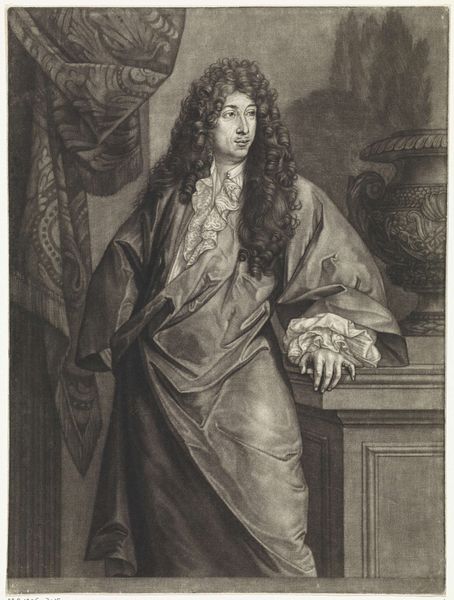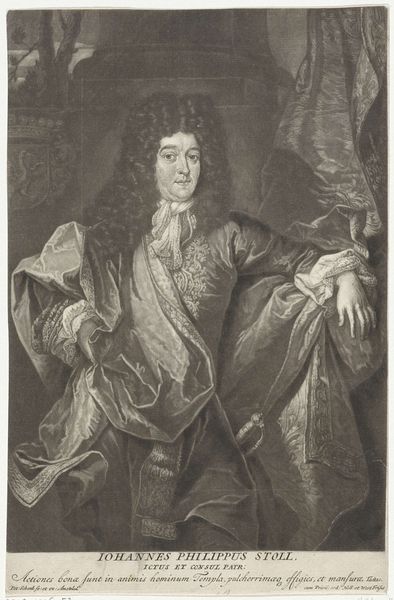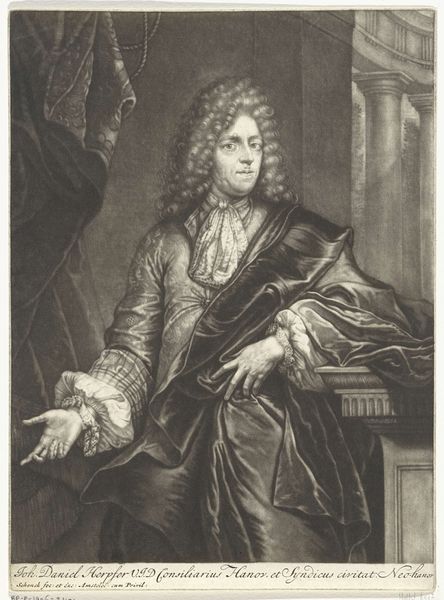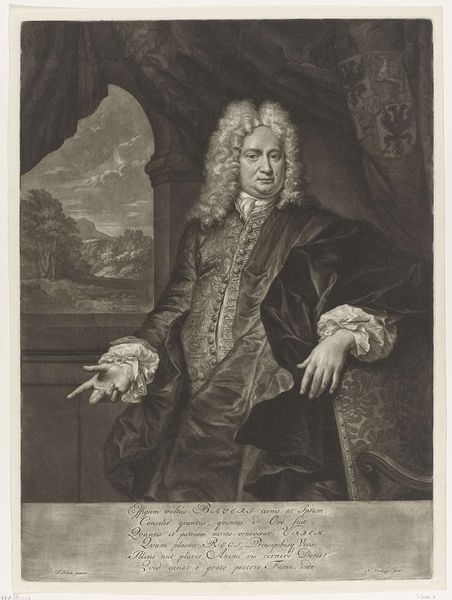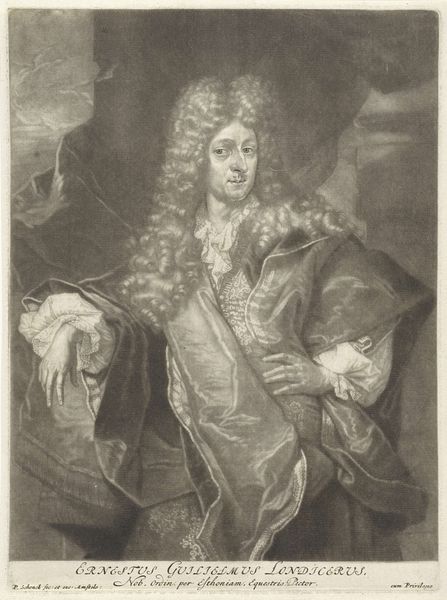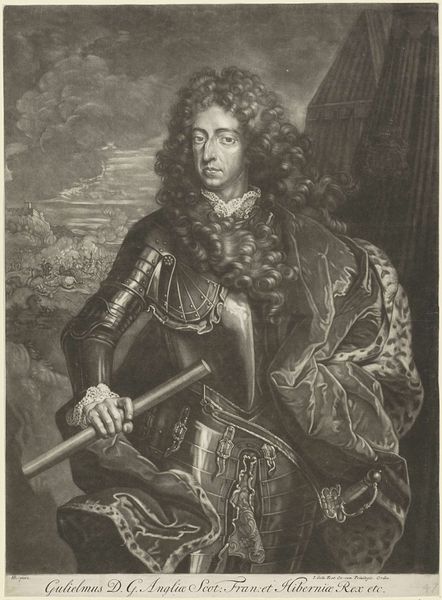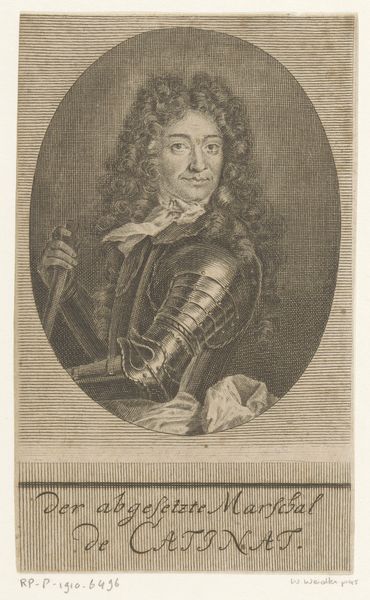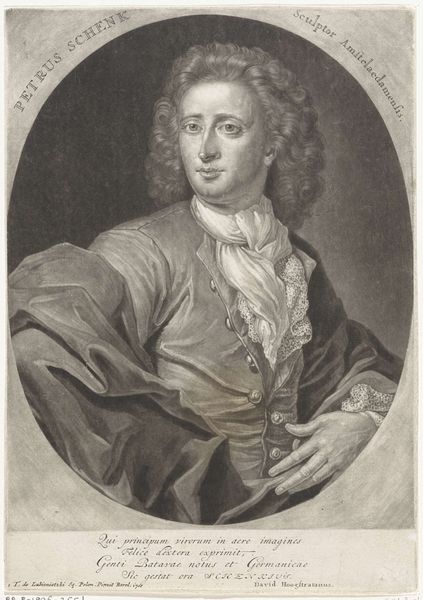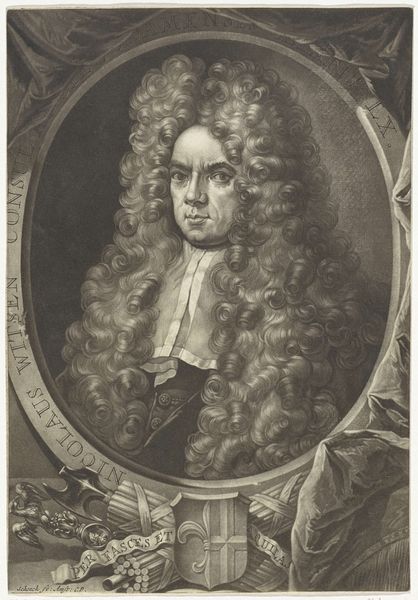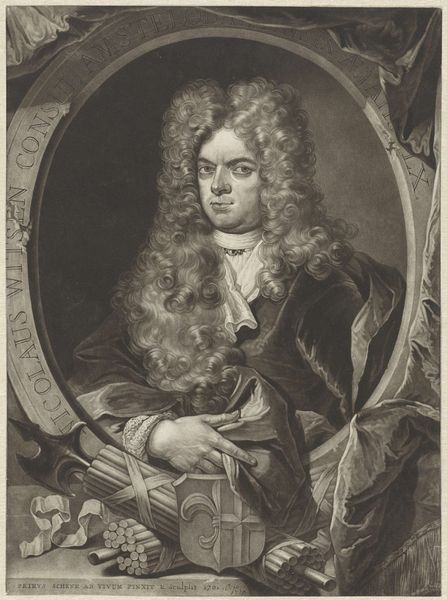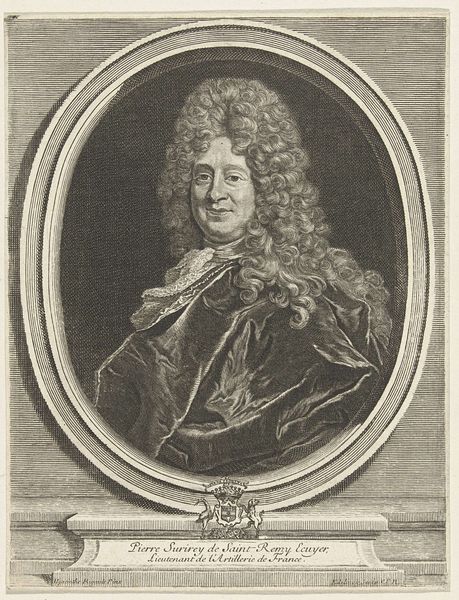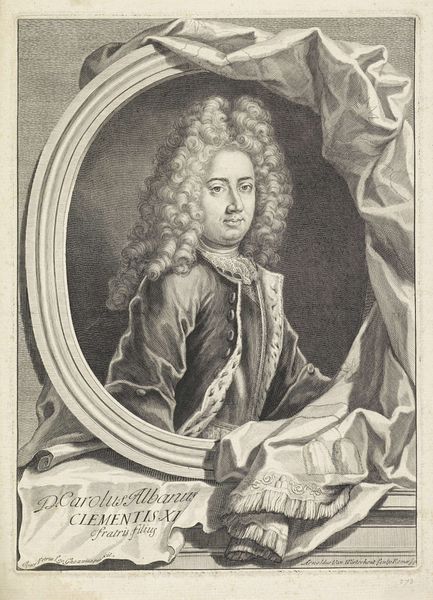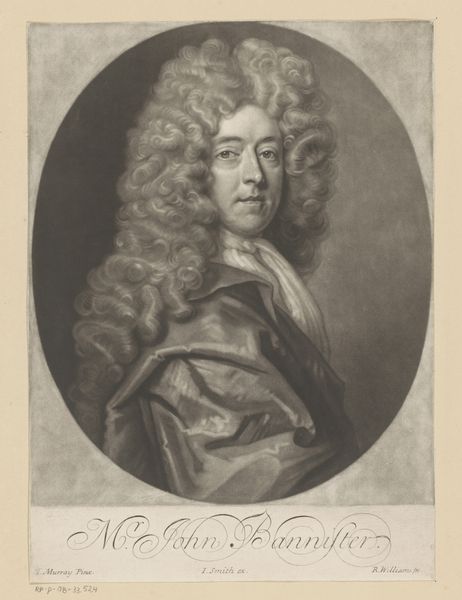
print, engraving
#
portrait
#
baroque
#
dutch-golden-age
# print
#
history-painting
#
engraving
Dimensions: height 253 mm, width 180 mm
Copyright: Rijks Museum: Open Domain
Editor: This is an engraving of Hendrik Casimir II, Count of Nassau-Dietz. It's dated somewhere between 1681 and 1724, made by Jacob Gole, currently held at the Rijksmuseum. It feels very formal, typical of Baroque portraiture. What strikes me is the artificiality of the backdrop versus the realism in his face. What do you make of this work? Curator: It's fascinating how prints like these circulated and cemented power in the Dutch Golden Age. Note how the idyllic landscape and classicized foliage acts as a symbolic backdrop for this important figure. What do you think it signals about his authority? Editor: I guess the landscape positions him within a context of power and ownership – he's literally the figure overlooking his domain, and perhaps suggesting that his influence is 'natural' or ordained? Curator: Precisely. Prints like these weren't simply decorative; they were powerful tools of statecraft. Consider where these prints would have been displayed - in public buildings, private collections, perhaps even sent abroad. This one probably reinforces Dutch power in an international theater. Do you notice anything about his attire, too? Editor: It looks very theatrical! Lavish but performative – he’s embodying a role. Curator: Absolutely. The performative aspect of leadership was crucial, and prints were instrumental in shaping that public perception. Engravings allowed for relatively inexpensive reproductions. In what other ways might a printed portrait democratize visual representation? Editor: Hmm, it would be more accessible and thus disseminate an ideology faster across the classes. I never really thought about prints in this way! Thanks for making it all so much clearer! Curator: It's a powerful medium to study within socio-political history, isn’t it? I'm glad we could unravel some of the context here.
Comments
No comments
Be the first to comment and join the conversation on the ultimate creative platform.
